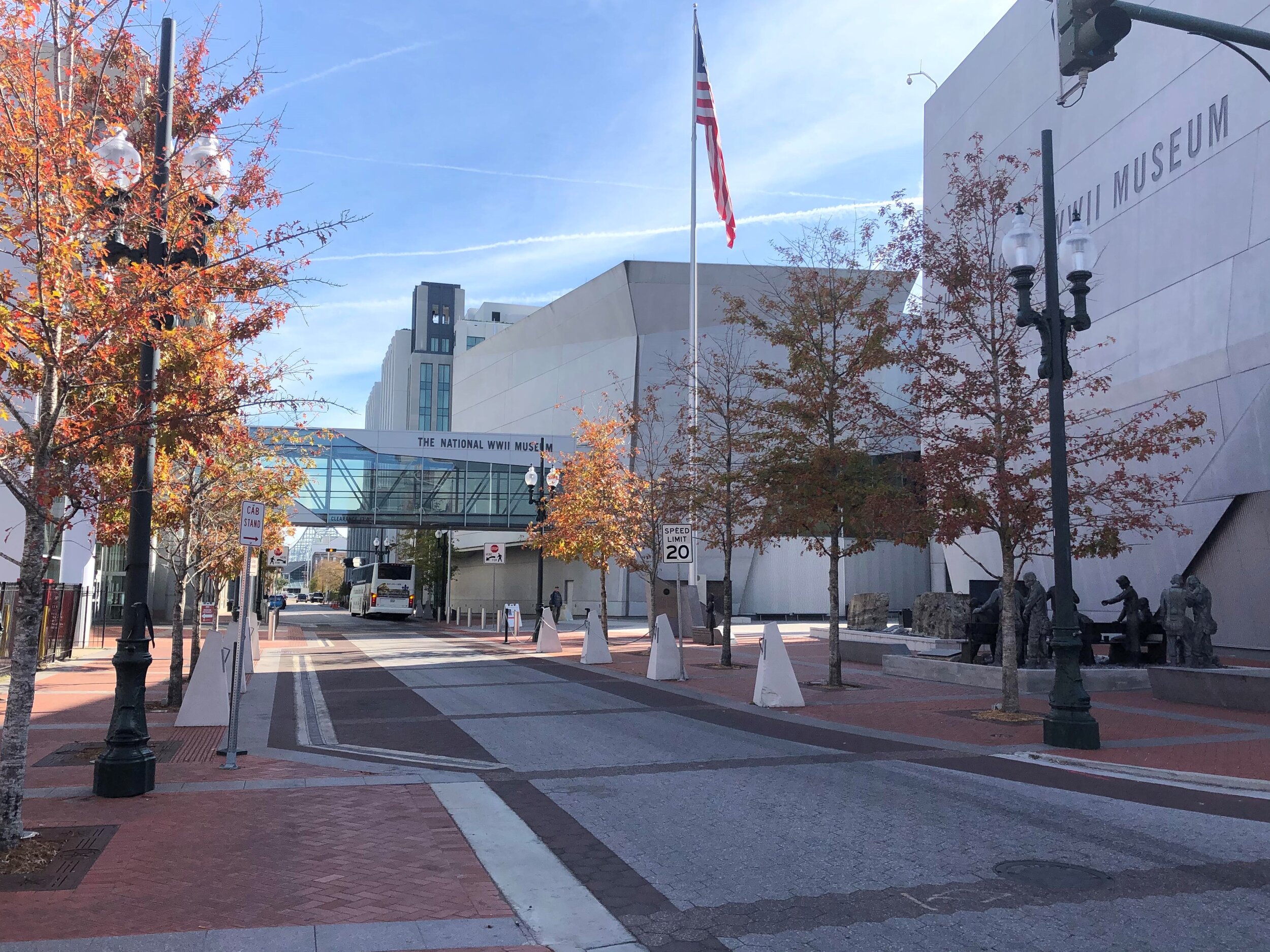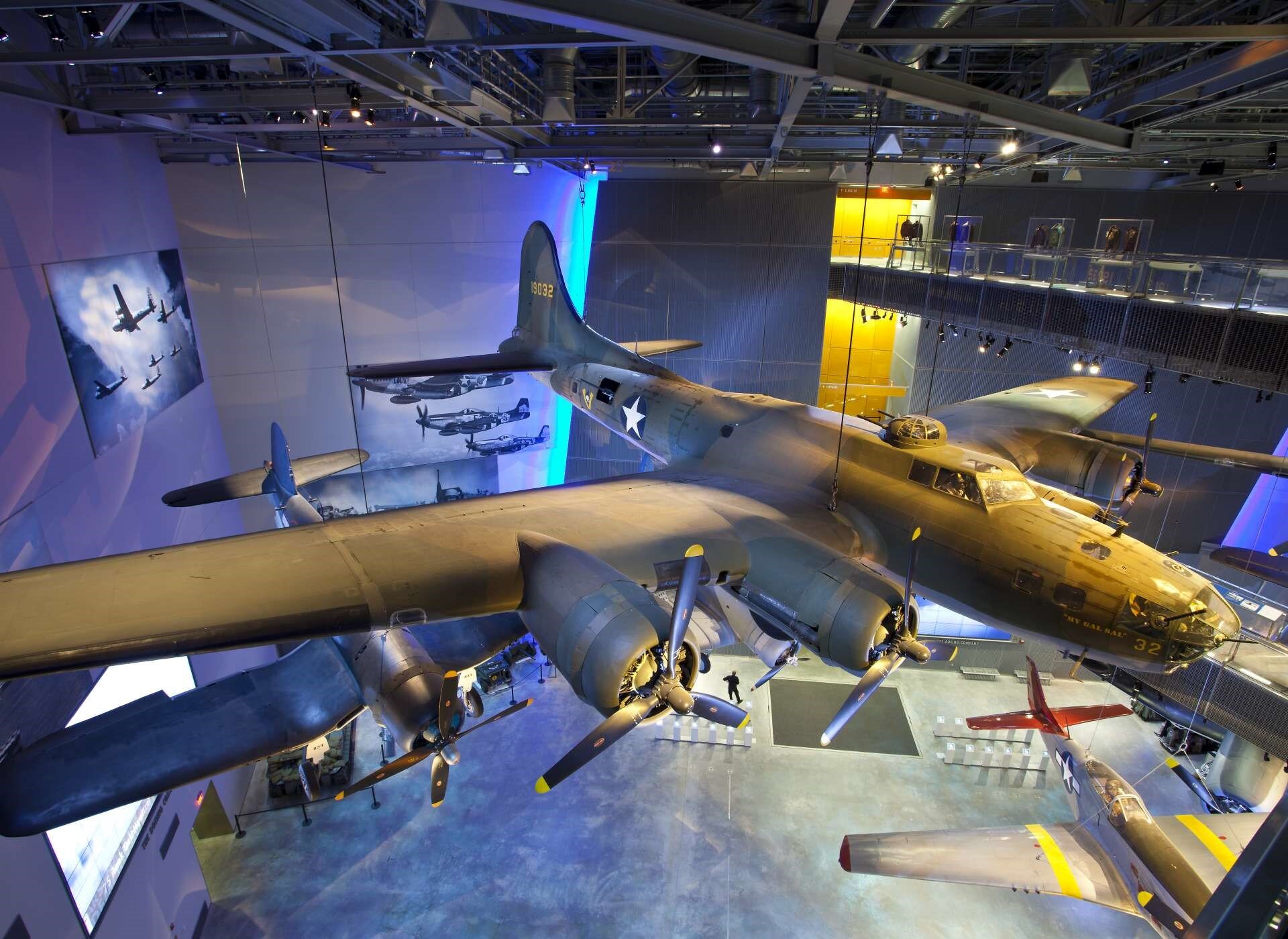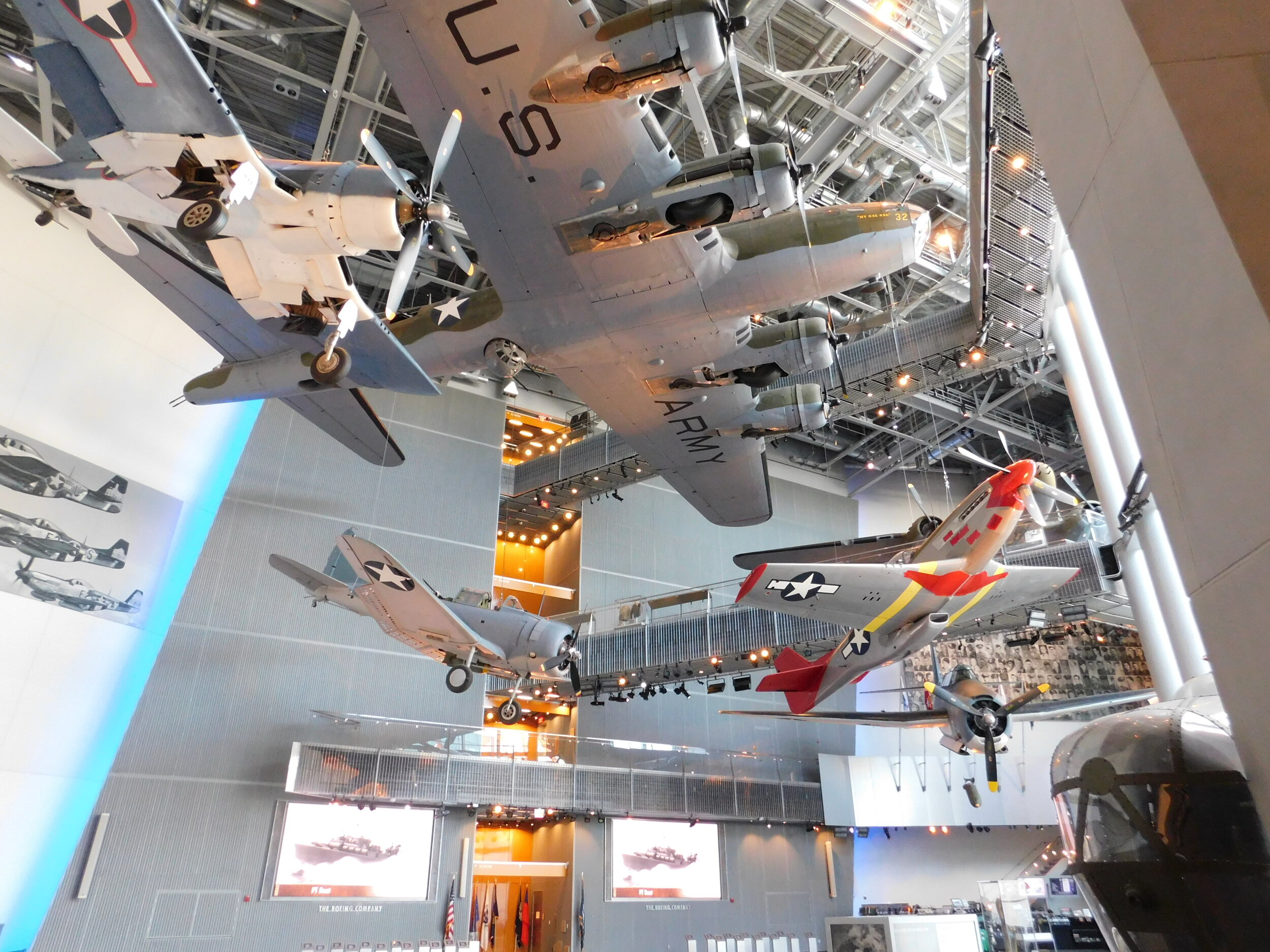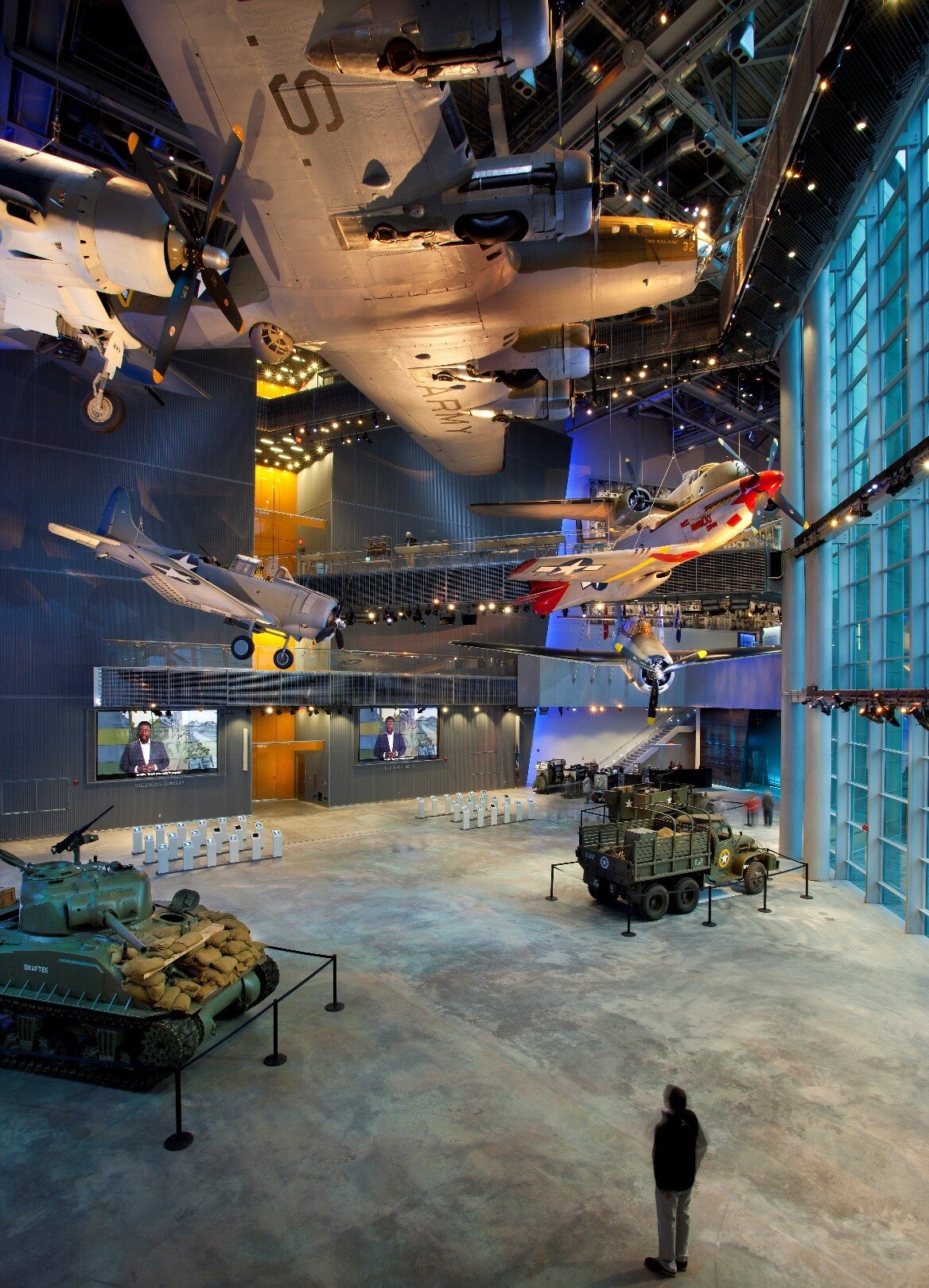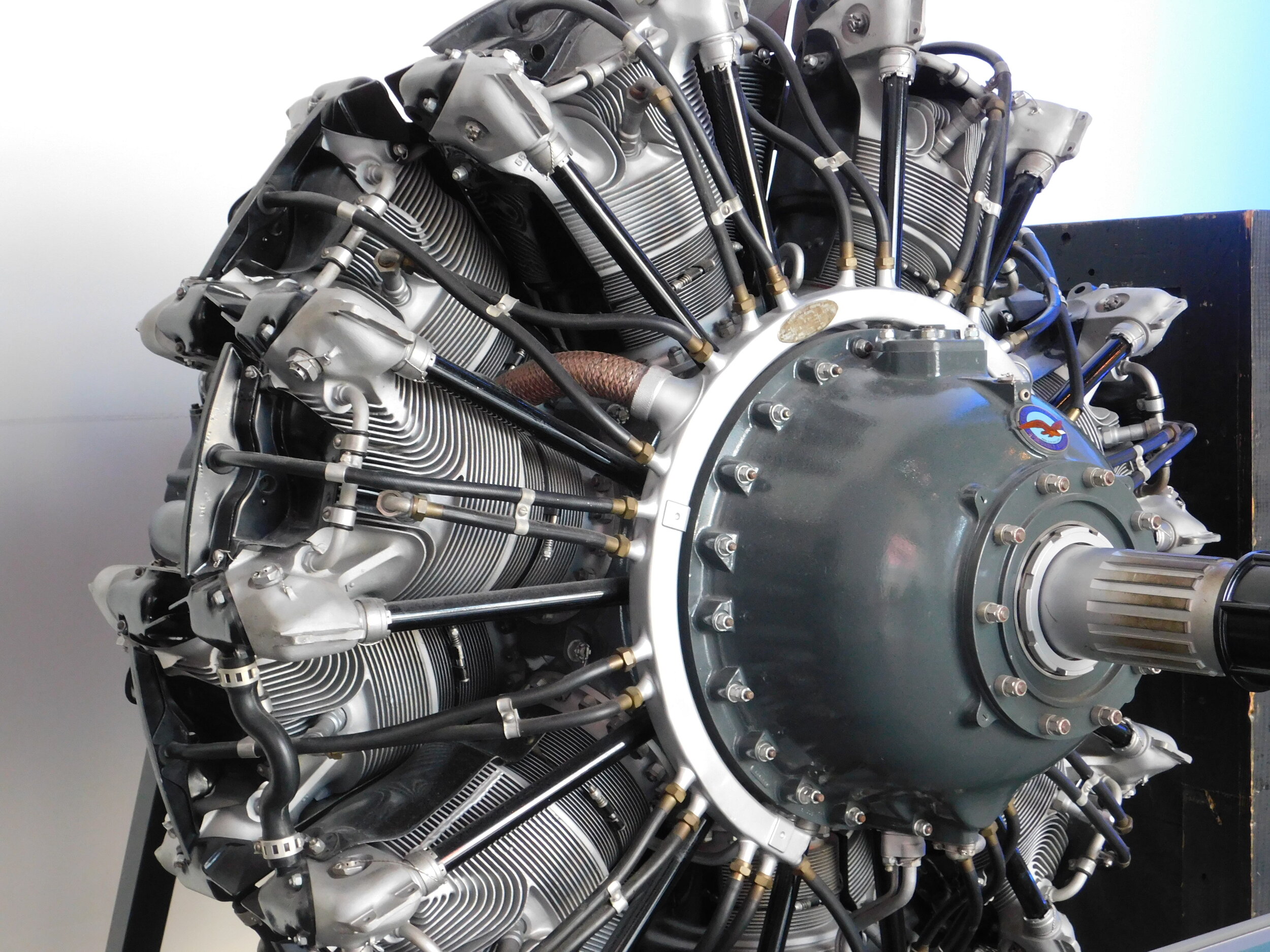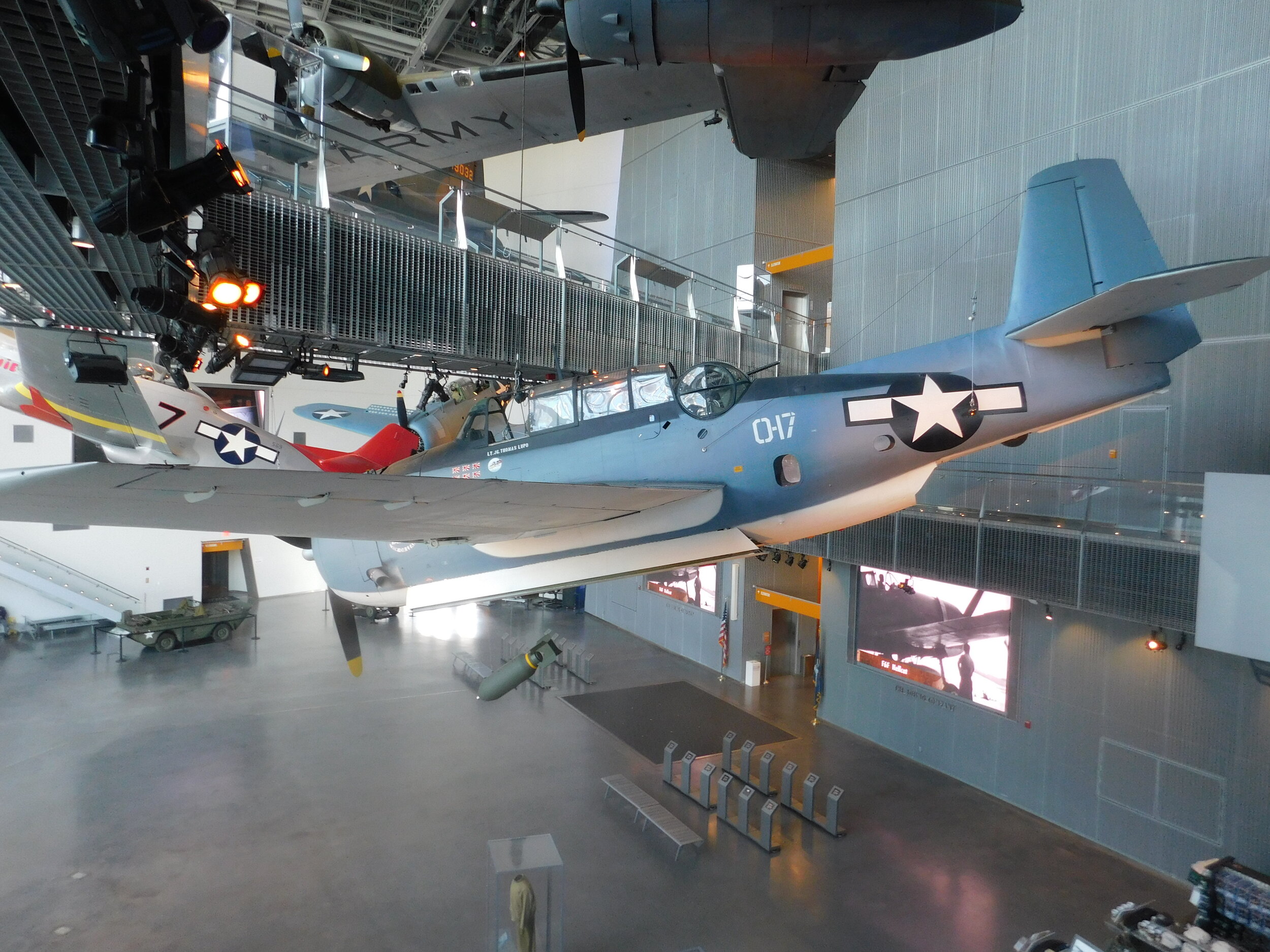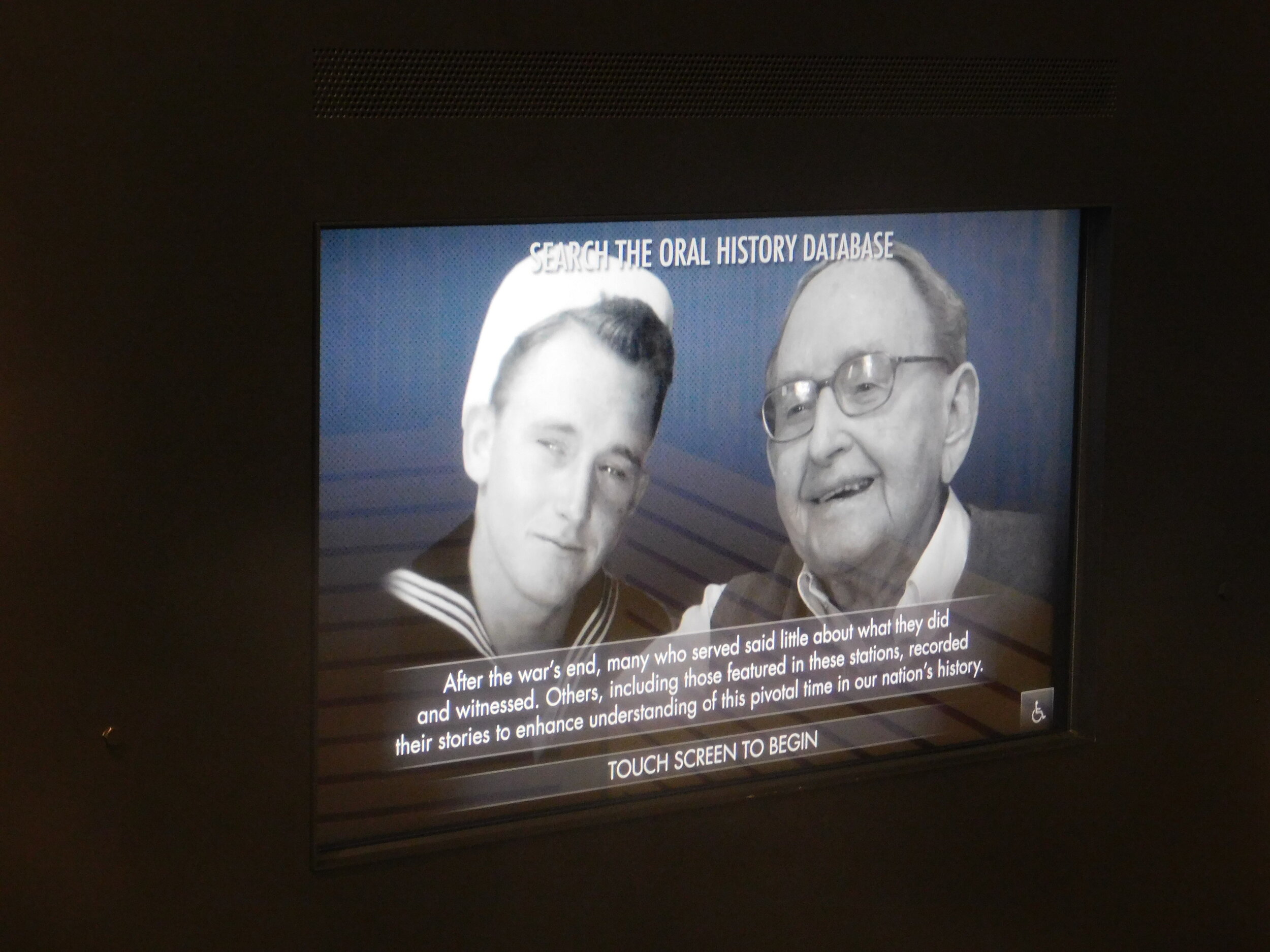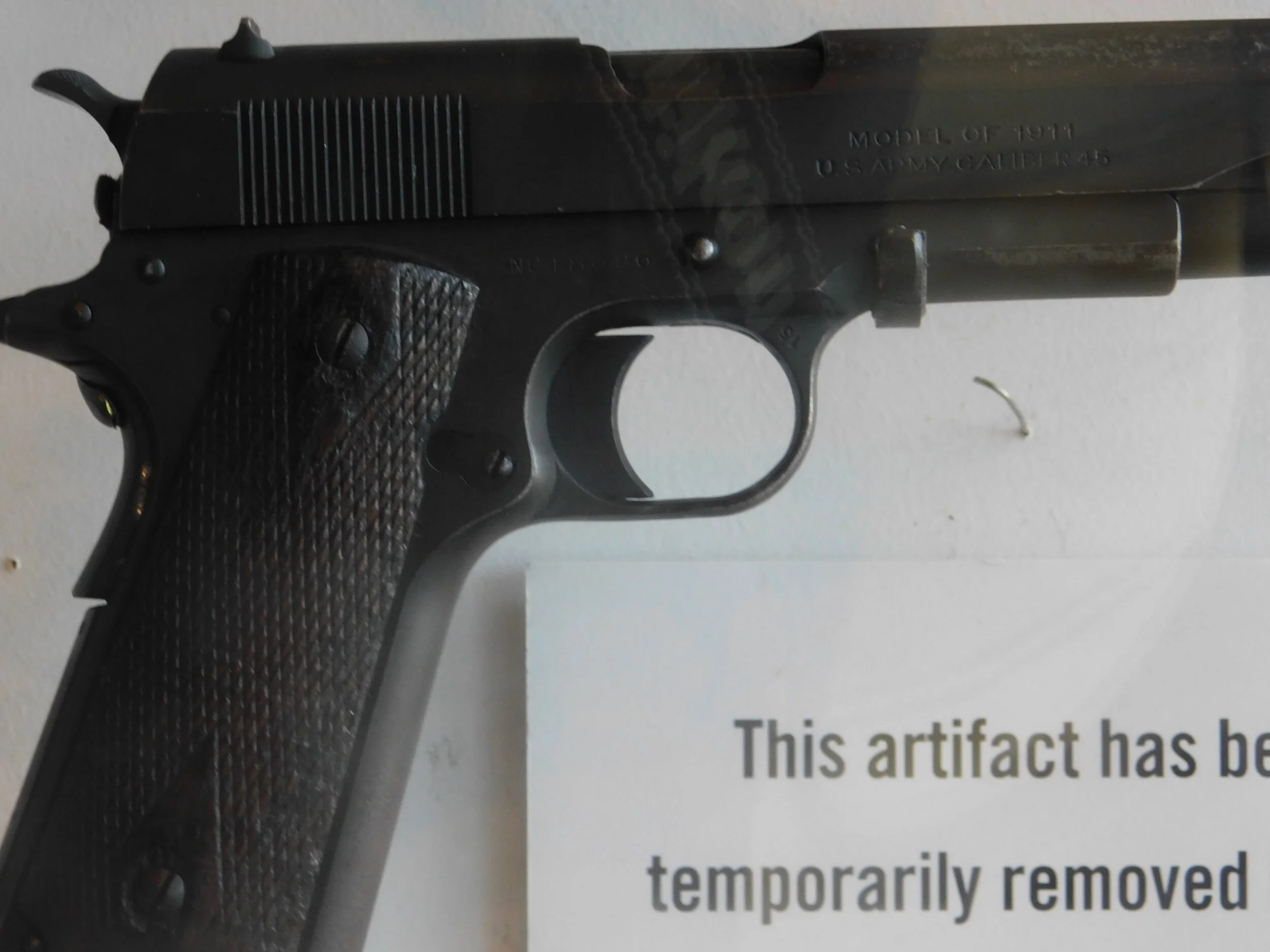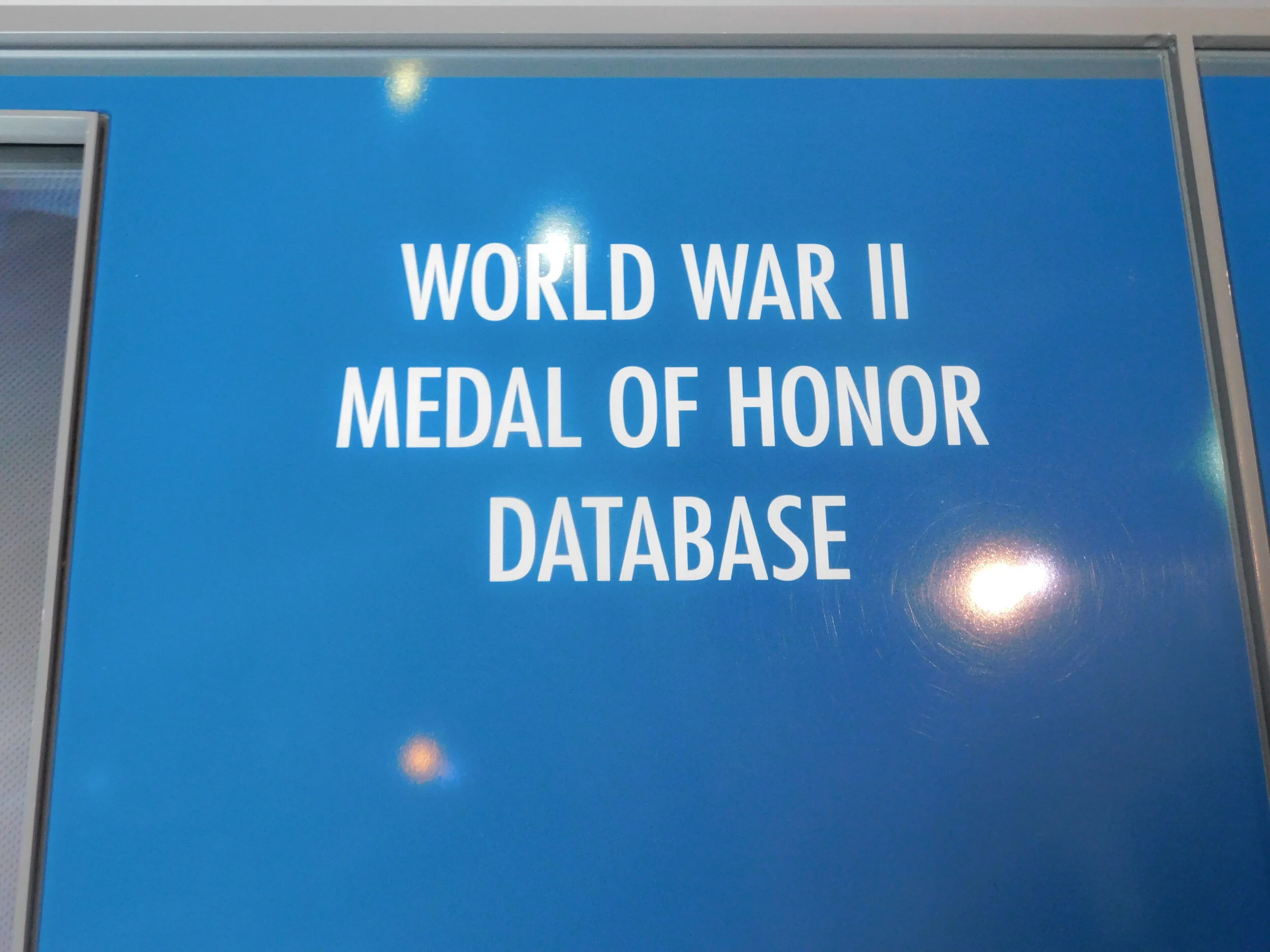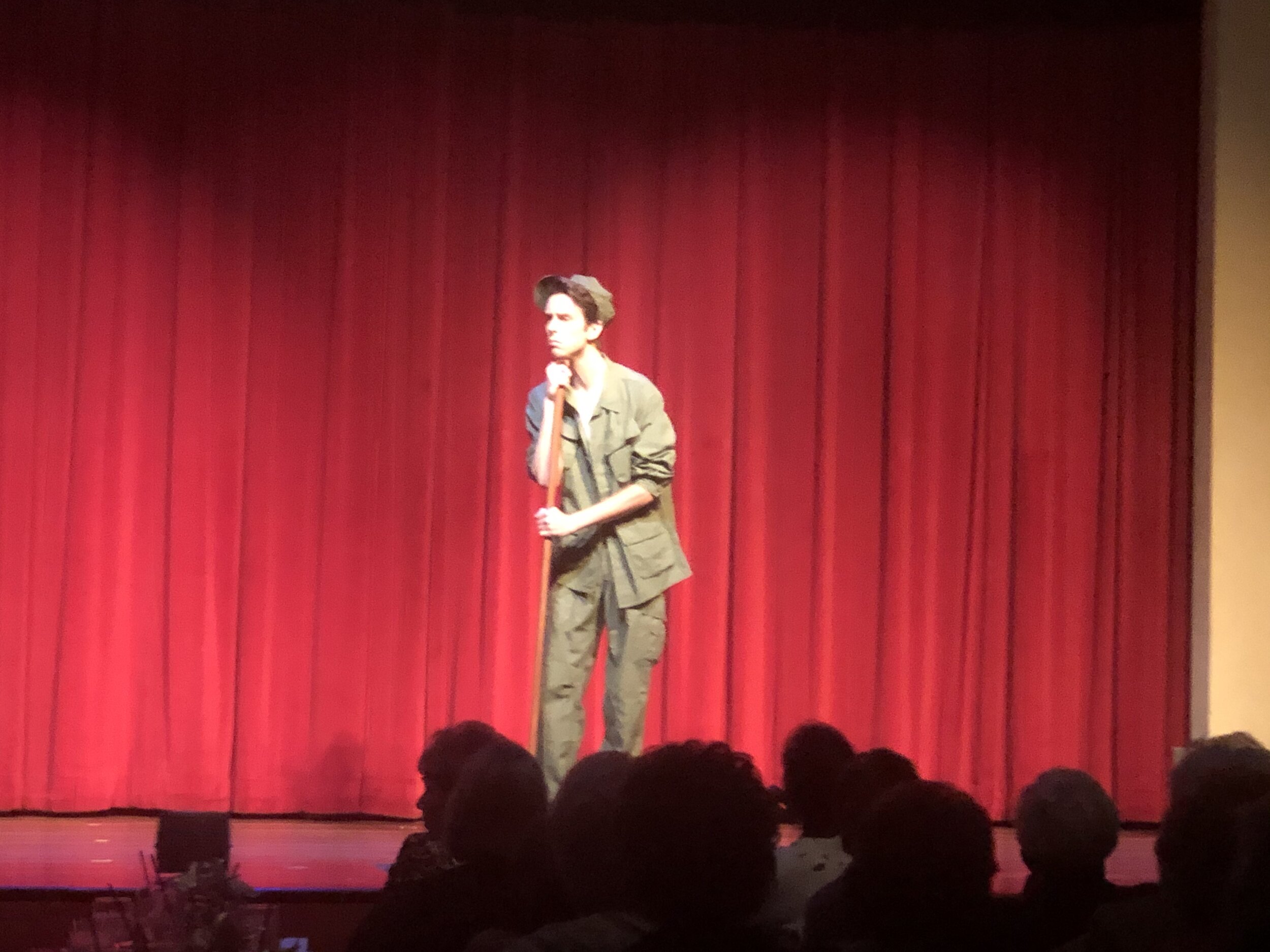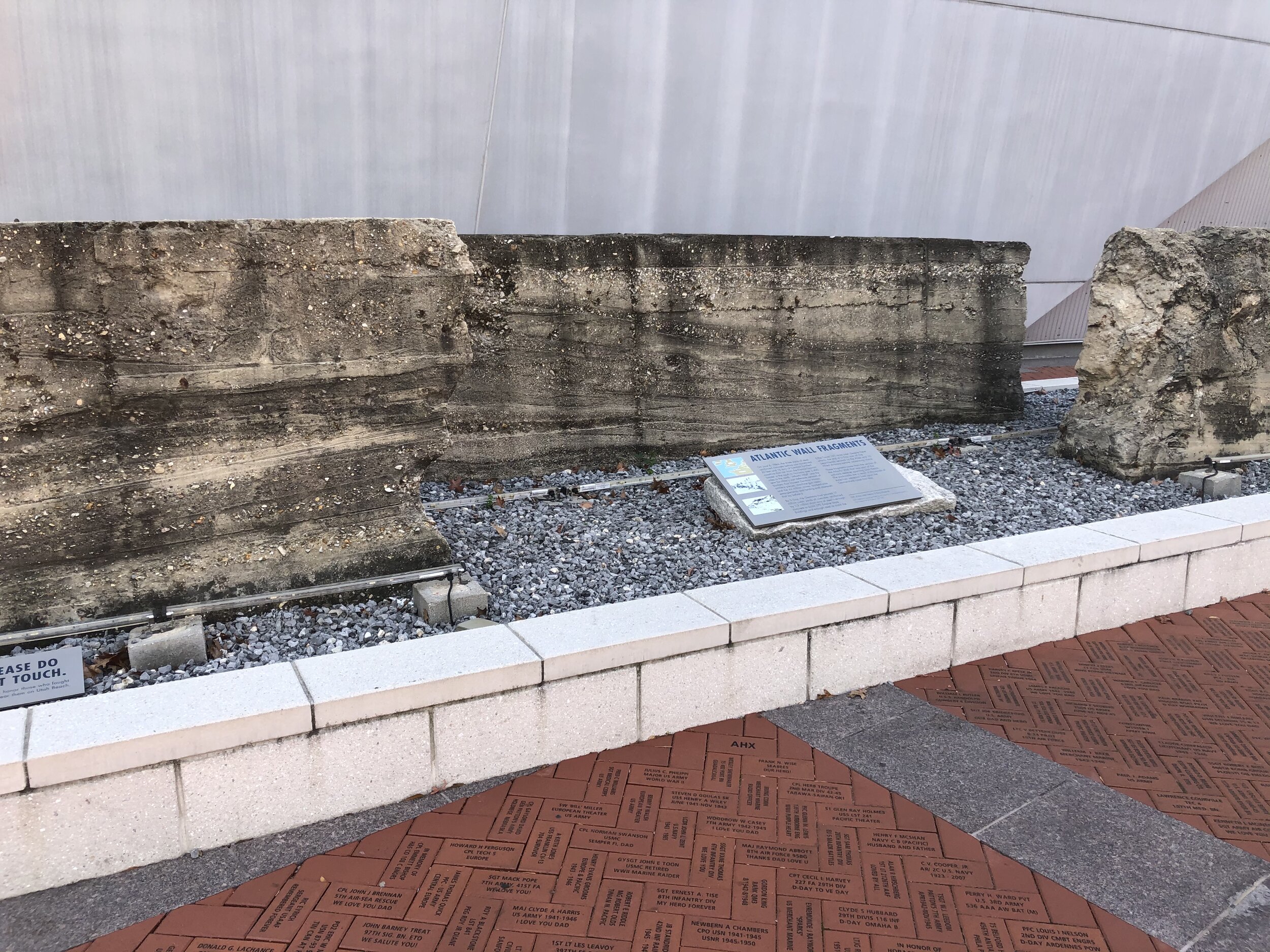The Boeing Center at the National WWII Museum New Orleans, LA
On June 27th, 1942, a formation of B-17s from the 342nd Bomb Squadron was making the ferry trip from North America to England as part of the massive military build-up of WWII. They were flying the leg from Goose Bay, Labrador to Bluie West One refueling field in Greenland. Approaching the coast of Greenland, they encountered a fierce storm which broke the formation apart. Some of the heavy bombers continued on to Greenland while the others turned back to Labrador. B-17E, 41-9032, named My Gal Sal, was one of the aircraft that continued to search for Bluie West One. Unable to fix their position in the blizzard and getting low on fuel, they decided to put down on the Greenland icecap. The pilot made a skillful landing in the bad weather and no one on board was hurt. Attempting to radio for help, the crew soon realized that the plane’s battery was not strong enough to transmit and they would need to start an engine for generator power. Because the propellers had bent and dug into the ice during the forced landing, there was no way to get an engine to turn. Fortunately, the on-board tool kit included a small hack-saw. The crew toiled for a day and a half to cut the propeller blades of the number four engine in half and finally had the Wright R-1820 engine running.
B-17 My Gal Sal Photo Courtesy of the National WWII Museum
Their SOS was eventually picked up and, in a few days, a Navy PBY spotted the downed B-17. The patrol plane dropped supplies to the crew and then landed on a lake 25 miles away. After a long and arduous trek, two crew members of the PBY reached the B-17. The following day, the rescuers led the downed crew back across the 25 dangerous miles and they were finally rescued after ten days on the ice.
Like many other aircraft that went down during the difficult crossing from North America to Europe during WWII, My Gal Sal was abandoned on the ice and forgotten.
The B-17 was eventually rediscovered and then retrieved. The restored My Gal Sal now proudly hangs in the US Freedom Pavilion: the Boeing Center, which is part of the National World War II Museum in New Orleans.
The Boeing Center is just one section of the huge Campus of the National WWII museum. Containing six aircraft, the Boeing Center will be the focus of this blog, but there will be an overview of the other parts of the museum.
As you enter the Boeing Center, you see the six aircraft (B-17, B-25, F4U, TBM, P-51 and SBD) hung high above in a dramatic setting. If this were the only view of these historic aircraft, I would have been disappointed at how far away the aircraft are. Luckily, there are a variety of unique viewing angles available. Above the main floor, there are three catwalks that allow you to view each aircraft from below, from the side, and from above. To me, the experience of any aviation museum is to be able to stand near a vintage plane and let yourself imagine where the plane has been and what the crews went through. The Boeing Center gives great opportunities for this type of reflection.
Starting on the main floor, each plane is seen flying above. You can picture the B-17 departing on a mission or the P-51 soaring high.
Heading up to the first catwalk, you can view the TBM Avenger head-on as it drops a torpedo during the Battle of Leyte Gulf. One level higher, you can look right into the cockpit of a Red-Tail P-51, or imagine the scream from the extended dive brakes on an SBD Dauntless that flew in the Battle of Guadalcanal.
Making the climb (or riding the elevator) to the highest catwalk, you can look down on a North American B-25 as it flies in close formation towards its target.
These catwalks give visitors unlimited ways to view the aircraft as well as explore the technology available. Next to each aircraft, for example, there are interactive monitors that allow visitors to discover a variety of information about the aircraft; its history, crew, and lots of other facts. In each case there is a 360-degree view of the cockpit interior that can be manipulated by the viewer. For example, this is the cockpit of the F4U Corsair:
You can turn and zoom the picture any way you like, and looking close-up at any instrument or switch. One could easily spend an hour exploring all the information available at each aircraft.
The museum is bathed in natural light from large windows, and the glare and the angle of the monitors can make taking pictures difficult. In person, though, these images are crisp and clear.
The Vought F4U Corsair was powered by a Pratt and Whitney Double Wasp R-2800. This engine, which was first installed on the F4U, eventually produced up to 2450 horsepower and, paired with the huge propeller (13’4”), it made the Corsair the fastest single engine fighter at the time.
The original Corsairs had several issues that made them difficult for fledgling pilots to handle on an aircraft carrier. Because of this, the majority of early Corsairs were delivered to the Marine Corps for land-based operations. They were first operated in the Pacific Theater in early 1943 and their speed and firepower made them an instant success. The example in the museum is the final variant to see action during WWII, the F4U-4. It is presented in the markings of VMF-214, the famous Black Sheep Squadron led by ‘Pappy’ Boyington.
B-25- with a good view of the three catwalks
The North American B-25 Mitchell was a medium bomber, named for Billy Mitchell, who was a pioneer of military aviation. In the 1920s he was a proponent of strategic bombing and is considered the father of the Air Force. There were almost 10,000 B-25s built and the type was used in all theaters during WWII. They are perhaps best known for the mission that Jimmy Doolittle led from the deck of the carrier Hornet to attack Japan. The B-25J displayed in the Boeing Center is painted in the colors of the 490th Bombardment Squadron which was known as the "Burma Bridge Busters." The squadron specialized in ground attack in Burma, in order to disrupt the Japanese supply lines. The B-25 was an excellent gun ship and from the catwalk you get a great view of two of its .50 caliber machine guns.
Let’s leave the Boeing Center for a moment and take a brief look at the other aircraft in the National WWII Museum.
After passing through the main entry to the Museum, you soon encounter a C-47 and a Spitfire, each with the three-stripe D-Day markings.
This C-47, 42-93096, was delivered in April 1944 and went immediately into service training for the D-Day invasion. Her first combat mission was on D-Day. One of the first planes over France early on June 6th, 096 dropped pathfinder paratroopers of the 82nd Airborne. This plane continued service in the invasion of France, making drops during Operation Market Garden and during the Battle of the Bulge. Post-war, 096 briefly participated in the Berlin Airlift.
This Spitfire, Mk 5b BL370, provided air support during the first two weeks of the Normandy Invasion. The plane crashed in a marsh in England later in 1944 and was recovered in 1985 for restoration.
Two of the main areas of the Museum are called Campaigns of Courage with one hall titled Road to Berlin and the other, Road to Tokyo. (A side note here, one of the few complaints I have about this museum is that it can be difficult to navigate. When you go, spend a little time with the available handouts and make a plan before you start your tour. The Boeing Center is at the back, so if you enter the museum first thing in the morning and go straight to the Boeing Center, you will have the Center and the guides all to yourself for at least half an hour).
As you enter the Road to Tokyo section that is dedicated to the China, Burma and India Theaters, there is a P-40 hanging above. The P-40 Warhawk (later variants were named the Tomahawk and Kitty Hawk) was powered by the Allison V-1710 V-12 engine. The P-40 was first deployed in North Africa and was slightly superior to the German Bf-109. Later, in Northern Europe, the P-40’s lack of a two-stage supercharger made it less effective in high altitude combat. The type was then used very effectively in the Pacific Theater where there were mainly low altitude operations.
This particular P-40 served briefly in the Aleutian Islands before being heavily damaged in a ground accident. It has been painted in the colors of the Flying Tigers which operated in Burma, under General Claire Chennault. Although born in Texas, Chennault was raised in Louisiana, hence the connection to this Museum.
Displayed in The Road to Berlin section is a Bf 109, probably the best-known German fighter. Designed by Willy Messerschmidt, over 30,000 were built and they served from 1937 (in the Spanish Civil War) to the end of WWII, recording the most kills of any WWII aircraft. Bf stands for the manufacturer, Bayerische Flugzeugwerke, but the plane was more commonly known as the Me 109. This example was put together from parts of downed aircraft as well as parts from captured manufacturing plants and is painted in the colors of the JG 300 Wilde Sau (wild boar) fighter wing. These fighters engaged the RAF night bombers over Germany, late in the war.
Photo Courtesy of The National WWII Museum
Returning to the Boeing Center, as I mentioned, the planes all hang high above looking, to me, like model planes that we built as kids and hung from the ceiling. So, what is on the floor below? When I visited, it was rather empty and one of the guides told me there was usually a tank and other pieces of ground equipment on display (as in this photo from the Museum web site). Because the Museum is still building, some items were moved outside until the construction is complete. There is still a Jeep there as well as a landing craft and a cockpit demonstrator of a B-17.
Also displayed is this nose section of a Consolidated B-24 Liberator. You can climb some steps to look inside but, unfortunately, it is not open to go inside. They do have a display cabinet with various pieces of equipment from the B-24.
There is also one of the B-24’s Pratt and Whitney R-1830s on display.
The Pratt and Whitney R-1830 Twin Wasp was the most produced aircraft engine of WWII (in fact, the most produced of all time). Powering the B-24, the C-47/DC-3, and the PBY, as well as many other aircraft, the R-1830 produced 1200 horsepower. Over 170,000 of these reliable engines were produced and there are many in use today.
As I mentioned, there are areas of the museum still being built and the main floor of the Boeing Center is rather bare. Hopefully, when construction is completed, there will be some additional aviation displays added here. In the other areas of the museum there are displays that you can walk through and experience ‘being there’. Something like that in this section would make sense- perhaps a forward maintenance facility on Corregidor, or one in France soon after D-Day. There is plenty of room here and displays like this would greatly enhance the experience.
Built by General Motors, the TBM Avenger torpedo bomber was effectively used by the Navy throughout the Pacific. Powered by the Wright R-2600 engine, the three-man crewed aircraft could carry 2,000 pounds of bombs. It is the type that President George H W Bush was flying when he was shot down in 1944. This particular TBM is painted in the colors of the aircraft that Lt(jg) Thomas C. Lupo flew from the USS Fanshaw Bay in the Battle of Leyte Gulf. During the fighting off Lamar, Lt Lupo flew numerous attacks on the battleship Yamoto. When out of ammunition, Lupo continued to fly runs to draw fire and provide cover for other aircraft. In frustration from having no firepower, he threw a coke bottle and other items from the cockpit at the battleship. Lt Lupo received the Distinguished Flying Cross for his actions.
The North American P-51 Mustang may be the best-known fighter of WWII. The original versions were powered by the Allison V-1710 engine with a single-stage supercharger. They first served with the RAF under the lend-lease program. They were successful as ground attack aircraft, but their long-range made them attractive for bomber escort duty. Unfortunately, the single stage supercharger caused them to be under-powered at higher altitudes, where the bombers flew. Eventually, the Rolls-Royce Merlin engine with a two-stage supercharger was fitted and the P-51 became a tremendous asset for escorting bombers over Germany, which helped bring the war to a quicker end.
(NOTE- Reader Robert Walter sent this additional information about the P-51 engine- “The production Mustang was powered not by a Rolls Royce Merlin, but by a Packard Merlin (extensively redesigned for mass production and with some significant hardware changes (Carb, supercharger, indium plated bearing surfaces) and upgrades (though most of these were folded back into the R-R produced units). The Packard Merlin was built in Detroit, and besides the Mustang, it found its way into some P-40s and Lancasters.” Thanks Bob! I always try to add as much detail to the blog as possible, but there are obviously limits to how deep to go, especially on the subject of engines. This point about who built the P-51 Merlins (under license from Roll-Royce), is an important detail. Tony)
The Red-Tail paint job of the Museum’s P-51D is probably well known to most as a Mustang flown by the Tuskegee Airmen of the 332nd Fighter Group. As segregation still existed in WWII, even in most of the military, 1,000 African American Pilots were trained separately at Moton Field in Tuskegee Alabama. These pilots were the first African American pilots in the US military, and they served with distinction.
The Douglas SBD Dauntless was a carrier-based dive bomber serving mainly in the Pacific during WWII. The dive brakes allowed the Dauntless to make a dive-bombing run at close to an 80-degree angle. The SBD is probably best known for success during the Battle of Midway, sinking four Japanese carriers.
The Dauntless in the Boeing Center was flown by the Marines from Henderson Field during the Battle of Guadalcanal. It was later flown by Navy Bombing Squadron 10 from the Carrier Enterprise. By 1944, it was being used as a training aircraft at NAS Glenview in Chicago and it crashed in Lake Michigan on a training flight in November of that year. It was recovered by the Navy in 1990 and restored.
To finish up, let’s return to the story of My Gal Sal. On the catwalk, next to the Flying Fortress, are a number of interesting relics. There is the prop that was cut in half and, most interestingly, a written diary of the ten days on the ice.
Lt Donald Bone documented the event and tells us the full story of the ordeal. You can view a video of the story at the monitor on the catwalk or on a huge screen on the main floor where various videos are shown continuously.
This is an amazing museum, and you could easily spend a week here, but even just a half a day will still give an enjoyable overview of the history of WWII.
Scroll to the bottom of the Photo Gallery for an overview of the rest of The National WWII Museum
________________________________________________________
To learn about what to do in the local area, museum hours and costs as well as books to read and other interesting odds and ends, keep reading! At the end you will find a photo gallery of the entire museum.
PLANNING YOUR VISIT
Open daily, 9:00 a.m. – 5:00 p.m. Closed Mardi Gras Day, Thanksgiving Day, Christmas Eve, and Christmas Day. Adults $28.50, Seniors, $24.50, Military, college students and K-12 $18.00. Children under 5 are free. There are several exhibits that have an extra charge. A second day visit is $7.
FLYING IN
Lakefront Airport (KNEW) is a large, historic airport with a beautiful Art Deco terminal that has been restored after being damaged by time and Hurricane Katrina (see photos below). The field has two FBOs- Flightline First and Signature. The National WWII Museum is a co-sponsor of the WWII Air, Sea & Land Festival, an annual three-day air show that takes place at Lakefront.
LOCAL ATTRACTIONS
Beyond the obvious and numerous attractions in New Orleans, here’s a couple lesser-know ones that we enjoyed-The recently opened Sazerac House at the corner of Canal and Magazine Streets is a fun place to visit. It is three floors of interactive displays on the history of liquors, including samples. Entry is free (must be 21). If you are walking down Magazine Street to the Museum, an interesting stop is the New Orleans ArtWorks gallery. Besides a large art gallery, the workshops behind are occasionally open to visitors. Glass blowing and other forms of art are on display.
WHERE TO EAT & STAY
The museum area has several restaurants each with a World War II theme. We tried them all and found them all very good. You can also see a USO style show at BB’s Stage Door Canteen. The canteen and other restaurants are accessible without a museum ticket. All are highly recommended. The newly opened Higgins Hotel is right next door to the museum. It has beautiful 1940s Art Deco décor and the restaurant and bar are fun stops.
Higgins Hotel Bar
Higgins Hotel Lobby
SUGGESTED READING
A favorite WWII book (non-fiction) is Max Hasting’s Bomber Command - a thorough and well-researched chronicle of the planes and crews of RAF’s Bomber Command. It is full of facts and details but is still very readable. A friend recently recommended The Huntress by Kate Quinn. One of the sub plots of this novel is the vivid story of a squadron of female Russian pilots in WWII which is quite compelling. Although certainly highly dramatized, the flying scenes definitely ring true.
MUSEUM WEBSITE
The Boeing Center:
https://www.nationalww2museum.org/visit/museum-campus/us-freedom-pavilion
The Main Museum:
https://www.nationalww2museum.org
UP NEXT
The Air Mobility Command Museum, Dover, DE
MUSEUMS ARE WHERE YOU FIND THEM
This segment is dedicated to finding interesting aviation artifacts that are in public view- but not in an aviation museum. If you see one send a photo!
Built in 1934, New Orleans Lakefront Airport was the original airport for the city. After Moisant (now Louis Armstrong Airport) opened in 1946, Lakefront became the corporate airport, which it remains today. The original terminal was built in Art Deco style. It was added to and changed over the years as well as being damaged by hurricane Katrina. The terminal was recently restored to its original condition and is really worth the trip out to Lake Pontchartrain to see. There is an excellent restaurant in the terminal.
PHOTO GALLERY
National WWII Museum and The Boeing Center
click any photo to enlarge
National WWII Museum
As you enter the National World War II Museum, you immediately get a taste of the technology you will find throughout the Museum. In front of you is a 1940s era Union Pacific railroad car, representing the most common way draftees left home for boot camp in WWII. After just a short wait, you enter the car and take a seat. The conductor gives a quick overview as the train ‘pulls out’ of the station. In the windows you see typical scenes of 1940s America passing by; scenes that would have been viewed by the millions of draftees leaving their home towns and heading to basic training. The conductor gives you a ticket for the Dog Tag Experience when you board and you register that ticket on the monitor in your seat. This pairs you with a soldier’s dog tag from the Museum data base and you can follow the war travels of that individual as you tour the museum.
Photo Courtesy of the National WWII Museum
After leaving the train, you soon encounter a C-47 and a Spitfire, each with D-Day markings.
In this photo you can also see a Higgins Boat, or LCVP. These boats were designed and built by Andrew Higgins in Louisiana and that connection was the impetus for building the WWII museum in New Orleans. Originally designed as a swamp boat, over 23,000 LCVPs were built, and General Eisenhower said that the Higgins Boat was one of the deciding factors that won the war.
You will next come to the Campaigns of Courage Pavilion which contains two main exhibits: The Road to Tokyo and The Road to Berlin. As you follow each ‘road’, you find them chock full of information, artifacts, unique items and interactive displays. It is mainly in these two halls where you will be able to follow the travels of the person whose dog tag you have.
The Road to Tokyo is similarly interesting and full of informative displays and artifacts.
There are any number of other wonderful exhibits throughout the Museum; I’ll just mention a couple that I really enjoyed.
There are quite a few scale models on display that are, unfortunately, located in areas that probably don’t get much traffic. I am always amazed at the quality and detail of models like this and the National WWII Museum has some outstanding examples. The TBM in the Boeing Center is painted in the colors of aircraft that flew from the USS Fanshaw Bay in the Battle of Leyte Gulf, beautifully represented in this model. The model of the battleship Missouri is likewise amazingly detailed.
There are several areas in the museum that contain traveling exhibits. One I found very interesting and unusual was an exhibit of stained-glass art, Remembered Light: Glass Fragments from World War II. All of these pieces of art were made out of fragments of stained glass retrieved from churches and cathedrals that were bombed during WWII.
There are a couple of exhibits in the Museum that have an additional entry fee, but they are well worth the cost. One that should not be missed is the movie Beyond All Boundaries. This half-hour movie is narrated by Tom Hanks and is an excellent overview of WWII. The film is interactive and seats shake when bombs go off, snow falls from the ceiling and, most dramatically, the nose of a B-17 lowers from the ceiling. It attaches to the front of a B-17 on the assembly line and then there are various scenes of the bomber in action.
Photo Courtesy of The National WWII Museum
In this photo you can see the physical nose of the lead B-17. The nose turns as the plane in the movie turns and it is an extraordinary visual. The entry is $7 but well worth the cost.
Another event that we attended was a show in BB’s Stage Door Canteen. Our show included a buffet, but there are some that are just the show. The food was average, but the show and whole experience was great, very much like a USO show.
We also tried out the other various restaurants and the food was good and the ambiance was excellent (although the electronic keyboard is probably not circa WWII!).
The Museum is actually a campus of a number of buildings and there is art work all around, including outdoors. You can also visit the restoration building and The Hall of Democracy for youth education and outreach. The National World War II Museum is all together a wonderful family experience.
Issue 8, Copyright 2020, all rights reserved. Unless otherwise noted, all photos by the author
